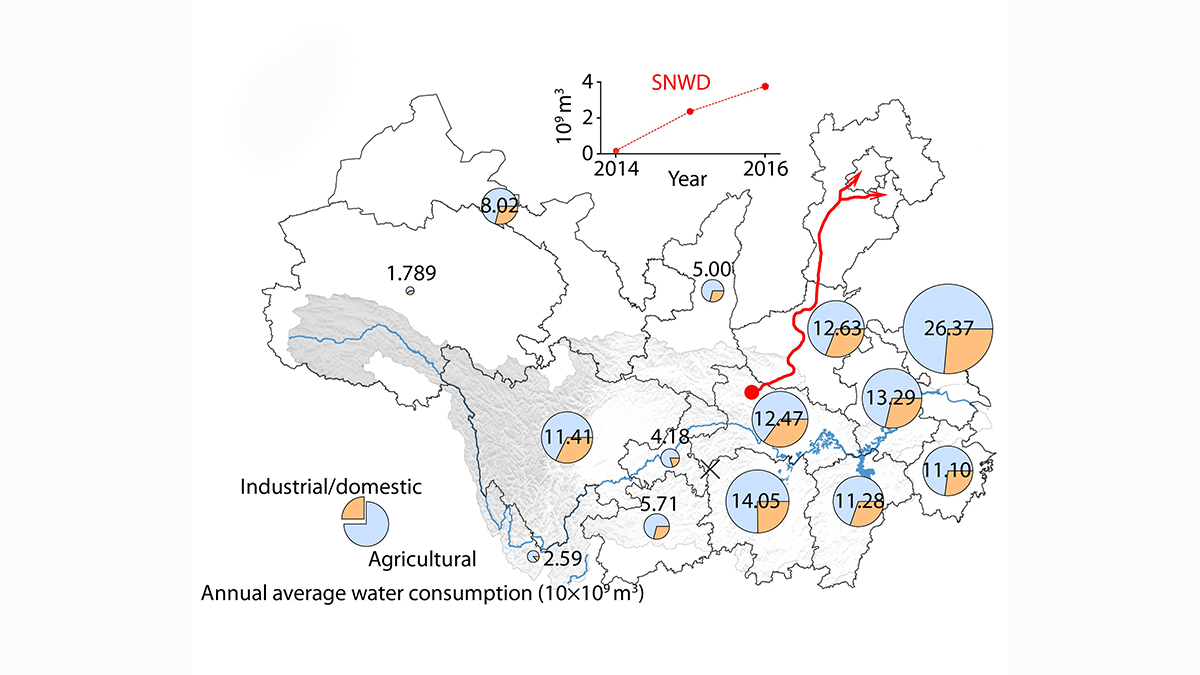Editors’ Highlights are summaries of recent papers in AGU’s journals and partner journals.
Source: Earth and Planetary Physics
Discharge gauging is essential for water resource management, climate studies, and flood management. However, in situ observations are point measurements and not always representative of what is occurring over larger spatial domains. More importantly, total basin runoff includes surface river discharge and subsurface runoff. The Yangtze River Basin discharge flux is not clearly distinguished from the basin’s runoff, and the subsurface runoff estimates show large differences from the results of other approaches. Therefore, by relying only on hydrological station observational data and hydrological models, our knowledge of basin runoff has remained incomplete.
Basin-scale water budget closure investigations have benefitted from the Gravity Recovery and Climate Experiment (GRACE) mission. The GRACE-derived Terrestrial Water Storage Change (TWSC) captures variations in residual water storage, including in natural water supply and loss. When the water budget closure method is combined with TWSC results, it becomes possible to balance the dynamics of basin runoff and TWSC data in a single equation because the main factors in the water budget closure equation are precipitation, evapotranspiration, runoff, and TWSC.
While precise runoff variation information can be obtained from the water budget closure equation, human interventions are usually neglected in water budget closure. Water diversion projects (such as the South-to-North Water Diversion Project in China) are a significant type of human intervention. Inter-basin water transfers can significantly change the water storage state of a river basin. In addition, the exploitation and utilization of groundwater (e.g., its extraction) adjusts the amounts of surface and underground water. This human water consumption, neglected in many previous analyses, increases uncertainties in the estimates of basin hydrological components that are based on conventional water budget closure methods even when using GRACE observations.
Rao and Sun [2022] have revised the water budget closure method by adding improved estimates of terrestrial water storage change and human water consumption obtained from GRACE data and in situ data, resulting in a comprehensive understanding of the runoff dynamics of the Yangtze River basin (YRB) at sub-basin scale. They evaluate the effect of human water consumption on the water budget closure.
The estimated runoff variations suggest that runoff over the YRB has been increasing, especially in the lower sub-basins and in the post-monsoon season, and is accompanied by apparent terrestrial water loss. The contribution of human water consumption is also reflected in evapotranspiration; the effect of the South-to-North Water Diversion on the sub-basin of the YRB accounts for 8 percent of apparent runoff.
The authors argue that the runoff balance method is the best method to estimate subsurface runoff if the surface hydrological data are sufficiently accurate. The major challenge that remains is determining the application effect of the global hydrological model in regional research.
Citation: Rao, W. L., and Sun, W. K. (2022). Runoff variations in the Yangtze River Basin and sub-basins based on GRACE, hydrological models, and in-situ data. Earth and Planetary Physics, 6(3), 1–13. https://doi.org/10.26464/epp2022021
—Le Chang, Science Writer
Editor’s note: Earth and Planetary Physics is an AGU partner journal; it is co-sponsored by the Chinese Geophysical Society, the Institute of Geology and Geophysics of the Chinese Academy of Sciences, and Science Press.

